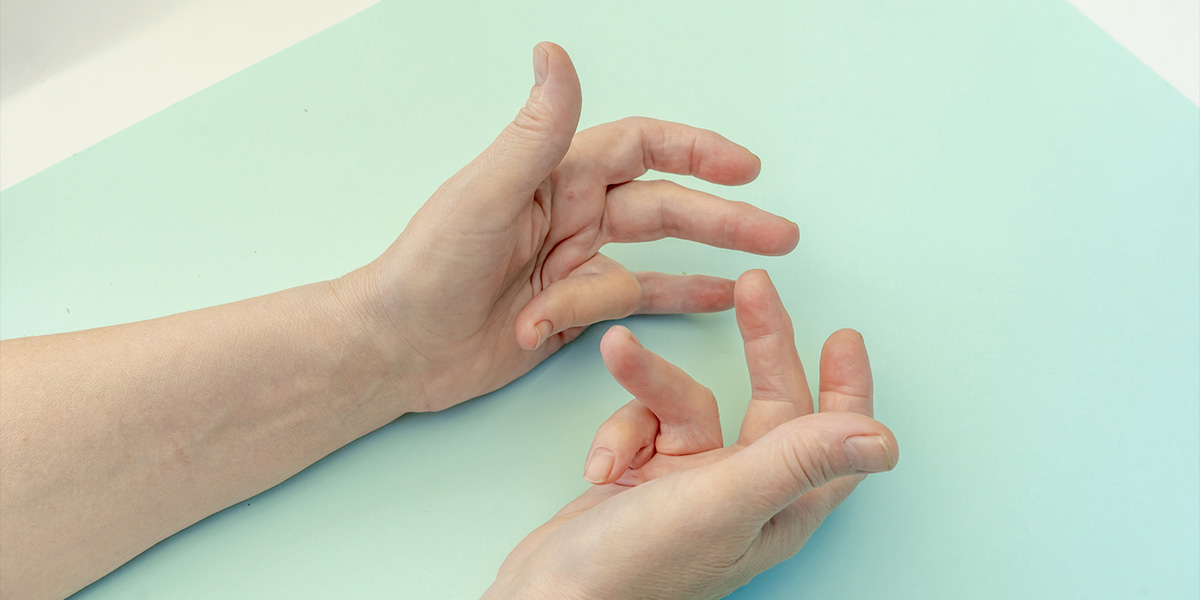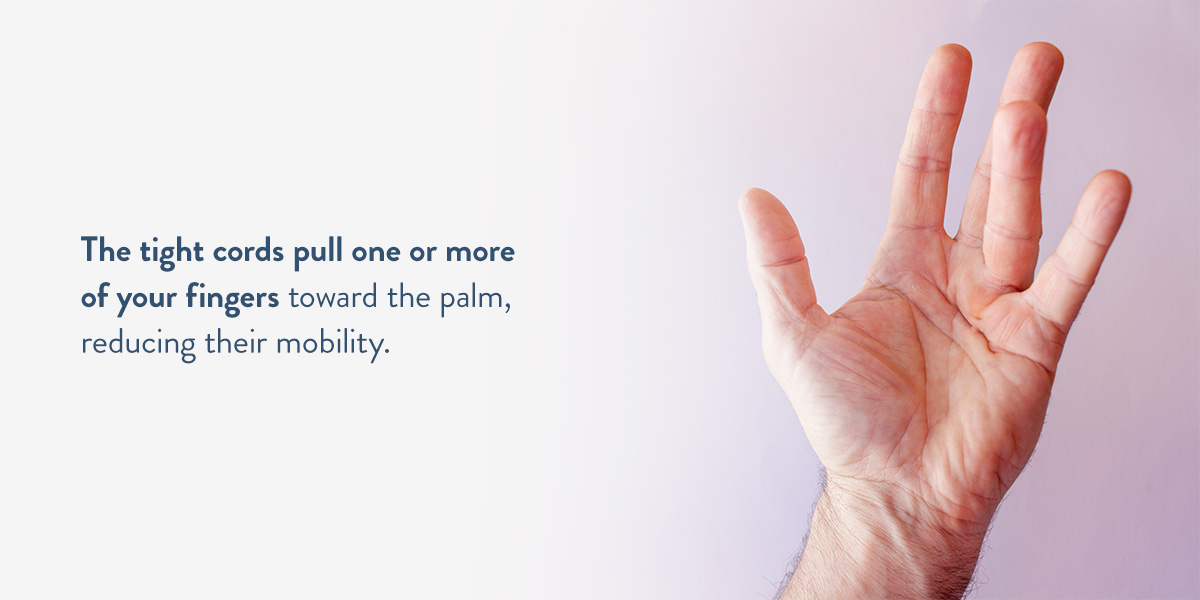Nonsurgical Treatment for Dupuytren’s Contracture

Our hands are crucial for various daily tasks. Anything that impacts their function can significantly alter your life. Dupuytren’s contracture is a medical condition that limits mobility in the fingers through rough cords that develop from tightened tissue. Several risk factors can influence the development of the condition.
There are a few ways to treat the conditions, including surgery and lifestyle changes. As an alternative to surgical treatment, the Hand Center of Louisiana offers XIAFLEX®, an enzyme injection that restores finger motion by treating the cord in the patient’s hand. If you have been diagnosed with Dupuytren’s contracture or experience any symptoms, explore some nonsurgical treatment options.
What Is Dupuytren’s Contracture?
Dupuytren’s contracture disease is a medical condition affecting the layer of tissue underneath the skin in the palm and fingers. The affected tissue often develops into thick cords and knots that could pull your fingers toward your palm, keeping them in a bent position. Usually, Dupuytren’s contracture affects the two fingers furthest from the thumb. The condition can affect both hands.
You may first start to notice lumps in the palm of your hand. These lumps could cause pitting on your palm’s surface as the tissue tugs at the overlying skin. As symptoms worsen, using your hands for daily activities can be challenging. Treating Dupuytren’s contracture as soon as possible is critical to prevent permanent damage.
Since most cases of Dupuytren’s contracture are mild, you will not always need treatment. However, it can get worse over time, making it challenging for you to keep your fingers straight. In that case, you’ll need to get treatment to fix the contracture and have full mobility in your fingers. Instead of undergoing surgery, you can get nonsurgical treatment to help slow its progression and improve finger function.
What Causes Dupuytren’s Contracture?
Dupuytren’s contracture has no known cause, but several risk factors can influence the condition’s development. These risk factors include the following:
- Gender: Men are three to four times more likely to have Dupuytren’s contracture than women. Men also tend to experience more severe symptoms.
- Ancestry: People of Northern European and Scandinavian descent are more prone to Dupuytren’s contracture.
- Heredity: This medical condition usually runs in the family.
- Alcohol use: Drinking alcohol could worsen symptoms of Dupuytren’s disease.
- Existing medical conditions: Those with seizure disorders and diabetes may be more likely to develop Dupuytren’s contracture.
- Age: This condition’s severity increases with age. It’s most prevalent in people over age 50.
How to Know if You Have Dupuytren’s Contracture

Dupuytren’s disease usually takes a long time to develop. The symptoms start out mild and have little impact on your hand function. Gradually they may worsen, severely limiting your hand use. Look out for the following signs:
- Nodules: You might notice lumps forming in the palm of your hand. The nodes may be tender at first but get thicker and more rigid over time. Your skin may also develop deep indentations around the nodules.
- Cords: As the nodules contract and thicken, the tissue under your skin develops into dense, tough cords. They can prevent your fingers or thumb from spreading apart or straightening.
- Contractures: The tight cords pull one or more of your fingers toward the palm, reducing their mobility. Your ring and little fingers are most prone to contractures, but any of your fingers, even the thumb, could develop them. You will most commonly see a contracture near the knuckle.
- Limited use of your hand: As Dupuytren’s contracture develops, you might have difficulty keeping your finger straight. Pay close attention to how your fingers function during simple activities such as holding large objects or putting your hand in your pocket. Your doctor may ask you to place your hand flat on the table to measure functionality. You may have Dupuytren’s contracture if you struggle to flatten your hand.
How to Treat Dupuytren’s Contracture
As there is no set medication for Dupuytren’s contracture, treatment varies depending on the patient and the severity of the condition. A physician will create a treatment plan based on your age, overall health and existing medical conditions. After conducting some tests, they can determine how severe your case is and whether they expect it to worsen. If the disease progresses slowly and you can still use your hands, you may not need Dupuytren’s contracture treatment. Your doctor should monitor your symptoms to see how fast your condition progresses.
Most treatment techniques target the cords that pull your fingers toward the palm. Explore these nonsurgical treatment options for Dupuytren’s contracture:
- Steroid injection: A steroid shot may help relieve pain from the lumps in your hand. It can also prevent your symptoms from getting worse. You may need more than one injection to treat the disease effectively.
- Needle treatment: Besides a steroid injection, your doctor could also insert a needle through your skin to break the cord pulling your finger toward the palm. You can do this procedure more than once if the contractures return. Needling doesn’t require an incision and can be performed on several fingers at once. After treatment, you may need some physical therapy to help improve the mobility of your hand.
- Changes to your lifestyle: You can treat mild Dupuytren’s contracture by adjusting your daily habits. Protect your hands by using insulation when gripping tools and gloves while grasping heavy objects. Monitoring your symptoms to see if they worsen over time is also helpful.
What Is XIAFLEX®?
XIAFLEX® is the only FDA-approved treatment for Dupuytren’s contracture that doesn’t require surgery. It is a relatively new treatment for Dupuytren’s contracture. A hand specialist injects XIAFLEX® directly into the cord causing limited mobility in the finger. The enzyme helps release the cord. If the cord remains, your physician may need to take additional steps to release the cord, which is often done under local anesthetic. You can conveniently have this procedure done at the Hand Center of Louisiana office.
XIAFLEX® injections can be done in your health care provider’s offices. The following steps are followed:
- Injection: Your doctor will inject XIAFLEX® directly into the cord during your treatment. You may receive more than one injection if you have several contractures. After the injection, your doctor wraps your hand with bandages and gives you specific instructions for at-home care. These instructions often include keeping your hand lifted until bedtime and limiting movement in your fingers. You should also avoid straightening your finger yourself.
- Follow-up visit: You may have another appointment with the doctor one to three days after the initial injection. During the follow-up, your doctor will evaluate your finger’s movement. If there is still a cord, they may need to “break” it using other methods. Depending on the method, you may need a local anesthetic.
- In-home treatments: After the doctor extends your hand, they will probably recommend some exercises for Dupuytren’s contracture. You might have to wear a splint at bedtime and allow yourself a rest period before resuming normal activities. The use of a splint and finger exercises may be recommended for several months to improve and maintain function.
- Final checkup: A second checkup should be scheduled for 30 days after your injection to assess your progress. You may require additional injections or treatment to increase the mobility of your fingers.
Schedule an Appointment With the Hand Center of Louisiana
If you have any symptoms of Dupuytren’s contracture, you may want to get your hands checked out to discover if you need treatment. Join the thousands who have benefited from full-finger extension following the nonsurgical release. Contact the Hand Center of Louisiana online or call 504-454-2191 to help determine if XIAFLEX® is the best treatment option for you.


